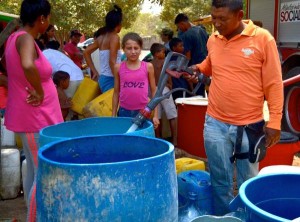By Christopher Leone
Cronkite News Service
WASHINGTON – The U.S. Department of Agriculture said Tuesday it could appoint “socially disadvantaged” farmers in six Arizona counties where the elected county committees may be lacking in representation by women and minorities.
If adopted, the plan unveiled Tuesday could result in the addition of one committee member in Apache, Coconino, Maricopa, Navajo, Pima and Yuma counties next year. The nationwide proposal will first undergo a 90-day public comment period.
County committees are made up of local farmers who typically meet once a month and help oversee contracts, applications and eligibility related to farm programs delivered through the USDA’s Farm Service Agency. The primary goal of the committees is to link the USDA directly to agricultural communities.
“For the most part it’s a thankless job. It’s a lot of work and a lot of responsibility,” said Mark Grubbs, executive director of the Farm Service Agency in Arizona.
The plan to ensure representation from socially disadvantaged farmers was first approved in the 2002 farm bill but was never acted on, according to Agriculture Department spokesman Matt Herrick.
Agriculture Secretary Tom Vilsack said in a 2009 memo that the department was “ushering in a new era of civil rights,” which included support for appointing socially disadvantaged members to committees.
A nationwide statistical analysis identified counties where local groups might be underrepresented on the county committees. In Arizona, Maricopa was identified as a county that might need representation by a woman farmer. Pima and Yuma counties were targeted for Hispanic farmers while Coconino, Navajo and Apache counties might need American Indian representation, according to the analysis.
Grubbs said counties identified as needing socially disadvantaged members are not necessarily shy of that representation, however.
“The majority of county committees in the state of Arizona have SDA (socially disadvantaged) or minority representation already on the committee,” he said. “The entire county committee in Coconino County, if I’m not mistaken, is minority or SDA . . . and they’re elected.”
County committees consist of three to five members who are elected to three-year staggered terms, with at least one seat coming up for election each year. Agricultural producers of legal voting age can vote for committee members if they participate or cooperate in any Farm Service Agency program.
In 2010, Arizona had a little less than 6,000 eligible voters and a voter turnout of 14.4 percent in all county committee elections that fall.
Under the department’s proposal, if a socially disadvantaged member is required in a particular county, the appointee would not replace an elected member but would simply be added to the committee as an extra voting member.
The department’s analysis of county representation was based on a look back at election results for the last four years. Since committee member terms last only three years, however, some of the counties identified by the USDA may have a socially disadvantaged member who was elected since the analysis was done.
Maricopa County, for example, has a female committee member who was elected last year, replacing one of three men on the committee. She still has more than two years left on her term.
A spokeswoman for Arizona Farm Bureau said the group welcomes the department’s efforts to broaden representation.
“We’re a grassroots organization and we support anything that promotes a more fair representation of our members,” said Julie Murphree, the spokeswoman.
Grubbs said proposal continues “the direction we’ve been going since 2002 when we were required to have minority representation on the county committee if you have people that were underserved.”





